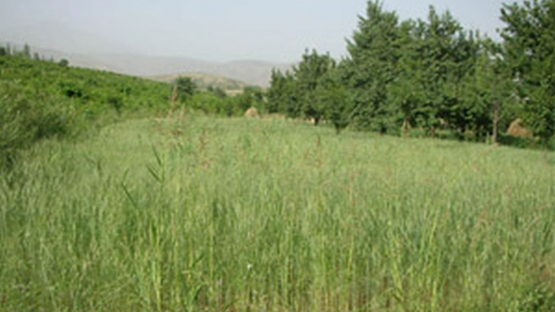The main criteria for a success story require that activities contribute directly and substantially to the prevention of soil erosion or the reclamation of degraded land, using appropriate and cost-effective approaches and technologies for soil and water conservation. However this success story addresses not only the biophysical measures to protect the soil but also the socio-cultural-economic issues of soil erosion and conservation. Activities of the IAEA, as a co-financing organization, were integrated into a multimillion UN-led undertaking on sustainable land management in the High Pamir and Pamir-Alai Mountains (PALM) funded by the Global Environment Fund (GEF). The PALM project aims to address the problems of land degradation and poverty within one of Central Asia's critical mountain regions through promoting sustainable land management practices which contribute to improving the livelihoods and economic well-being of their inhabitants. The soil Science Research Institute with the support of the IAEA will facilitate the on-site evaluation of the mentioned FRN methodology for soil erosion mapping and evaluating soil conservation measures.

If you would like to learn more about the IAEA’s work, sign up for our weekly updates containing our most important news, multimedia and more.
Food Security and Sustainable Agriculture: The Answer is in the Soil-Tajikistan
For more than 50 years the Soil Science Research Institute (Academy of Science) has been actively involved in efforts to combat soil erosion and land degradation in Tajikistan.
With just 7% of Tajikistan's land being suitable for agriculture, soil erosion and land degradation represent a major threat to soil and water resources needed for sustainable agricultural production. Soil degradation due to unsustainable land use practices and demographic pressure lead to the destruction of landscapes and desertification if not halted. As a consequence of past and present degradation of the soil, the resource base that still allows production, could reach such low proportions that in medium term the economic cultivation of food and commercial crops will not be possible any longer. In order to provide a comprehensive assessment of the magnitude of these problems and make the selection of effective soil conservation measures, there is a need in the country to obtain quantitative data on the extent and rates of soil erosion, under various agro-ecological conditions and land use systems.
Through IAEA TC project TAD5002 (Assessment of Soil Erosion and Sedimentation for Land Use, 2005-2008) the quest for alternative techniques for assessing soil erosion to complement classical methods has directed attention to the use of Fallout Radionuclides (FRNs) as tracers to obtain quantitative estimates of soil erosion and deposition in agricultural landscapes. Two small agricultural catchments were selected for estimating soil erosion rates by using fallout radionuclides (137Cs) and preparing soil erosion maps under contrasted agroecological and geomorphological conditions. The results show that the use of Fallout Radionuclides (FRNs) is an efficient option for the assessment of soil erosion and evaluation of soil and water conservation technologies and approaches in Tajik agro-ecosystems. The collected data will be used for upscaling and preparing the Soil Erosion Map of the Central Part of Tajikistan. Systematic data about soil erosion rates and better understanding of the soil erosion processes will also provide the basis for sustainable land use planning and decision making and the promotion of soil and water conservation techniques. Strip cropping, mulching, gabion construction, gully rehabilitation, plantation of shrubs and trees, wind break poplar plantation, pasture rotation approaches and technologies decreased the soil erosion rate from 150 t/ha to 8-15 t/ha/ year in Tajikistan. By employing appropriate soil management practices with the use of FRN, a considerable amount of nutrients such as nitrogen, phosphorus, sulphur and potassium was retained in farm land for crop production, instead of being lost in the wind or water runoff to streams and rivers.


